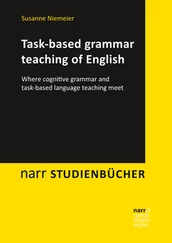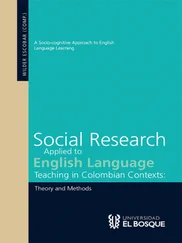ibidem-Press, Stuttgart
For Amy and Max
Table of Contents
Part One: The Color Blue Part One: The Color Blue
Part Two: Springfield 2011
Part Three: Rapture of the Deep
Credits
Acknowledgements
Part One: The Color Blue
1. The Picture Dictionary
Sabeen came to class early. She said she couldn’t understand English.
But I understand you, she said.
This was what she meant: Americans talked so fast. Even when she got the gist of it she couldn’t respond. In her head all she heard were the words of her first language.
I’m from California, I said. People speak slower in California.
I was exaggerating a bit. Native Californians did speak a slower, less inflected form of English, but I was trying to make a broader point about regional differences the world over. I reminded her that people in southern Iraq didn’t speak the same as people in the north, but my efforts were in vain: Now she wanted to move to California.
When everyone arrived I gave them a copy of a page from the picture dictionary. It was a drawing of three cooks in a restaurant kitchen. One was peeling potatoes, another was rolling out a pie crust, and another was opening a can.
The cooks were surrounded by utensils. Each utensil had a number that corresponded to a list of words at the bottom of the page. If Sabeen wanted to know the word for what she used to drain pasta she looked for the number next to that item and found the word on the list. Then she said the word to herself. Colander .
The picture dictionary was based on a common assumption: To learn a language was to learn the names native speakers gave to different things. It could be something concrete, like colander , or abstract, like hunger .
It was an old idea. Plato articulated a version of it in the Cratylus:
The name, like the picture, is an imitation.
The picture dictionary wasn’t just positing a theory of language acquisition—it was positing a theory of meaning. A word meant what it referred to. If I didn’t have a colander in front of me, I could close my eyes and see the image of one in my head.
I turned on the document camera and projected the page on the board. I pointed to the colander and asked them what it was and they said the word colander . Then they took out their phones and translated the word into their languages:
مصفاة
တစ်ဦ
kichujio
shaandho
फिल्टर
They were looking for identities, equivalencies. The picture dictionary encouraged this because it too was a tool for translation: It translated an actual colander into a picture of a colander, and then a picture of a colander into the word colander . The whole process was visual: They trusted what they could see with their own two eyes.
We played a game. I put the following utensils in a big cardboard box:
A grater
A pan
A pot
A ladle
A knife
A colander
A spatula
A mixing bowl
A wooden spoon
A cutting board
A whisk
A vegetable peeler
I took a utensil out of the box and showed it to them. They told me the word for it and I wrote the word on the left side of the board. I did this until I’d made a list of all the utensils. Then I showed them the utensils in a different order and they told me the words again and I made a new list on the right side of the board.
I had them read each list out loud, then I took all the utensils and put them back in the box and divided them into two teams. One person from each team came to the board, took an eraser, and stood in front of a list. I took a utensil out of the box and showed it to them. Their teammates yelled the word to them and they looked for the word and erased it. The first person to erase the word got a point for their team.
The game might help them remember the word colander , but it might not. They might go home that night and open the kitchen cabinet and see the steel bowl with the holes and the handles and not remember what it was called and blame themselves, telling themselves it was because they were adults, that it was easier for children.
The excitement they’d felt when they first arrived—that sense of safety and infinite possibility—would start to give way to resignation.
Like the picture dictionary, the game was based on a false assumption: To learn a language was to learn the names native speakers gave to different things. By playing the game we were perpetuating a myth. But that was okay, because that wasn’t the point of the game.
They came from cultures that stressed the importance of rules, and memorization, and the authority of the teacher, so the game challenged their expectations about what could happen in a classroom. It got them laughing.
But it was more than this. They’d all studied the grammar of their first language as children, so now, as adults, they had very fixed ideas about the nature of language and how to go about learning a new one. I could try to counter that. I could make the way we learned English part of the experience of learning English, but that would be a waste of precious time: I’d never convince them that a language and its grammar weren’t one and the same. We’d get much more done if I gave them something familiar—in this instance a game that treated words like labels—then took some of the new words and did something completely different with them.
I wheeled a small black utility table to the front of the room and placed the following objects on it:
A bottle of olive oil
A box of pasta
A tomato
A bulb of garlic
A wooden spoon
A knife
A colander
A spatula
A pot
A pan
A plate
A fork
A cutting board
A jar of basil
A shaker of black pepper
I took a step back from the table and stroked my chin and nodded. I’d just had an epiphany: I wanted to make pasta!
I stepped up to the table and turned on the imaginary cold-water tap and filled the pot with water. I put the pot on the stove and turned the heat to high. While the water was boiling, I placed the bulb of garlic on the cutting board and smashed it with the side of my knife. I separated a clove, cut off the tip, removed the skin, then diced it. I put the pan on the stove and turned the heat to low. I put oil in the pan. I scraped the garlic off the cutting board and into the pan. I added basil and black pepper. I chopped the tomatoes and added them. While the tomatoes were cooking down, I put the pasta in the boiling water. I stirred it occasionally, testing to see if it was al dente . When it was ready, I drained it in the colander, put it on the plate, and spooned on the sauce.
A friend of mine lived in Italy for many years and he taught me how to make this sauce. I watched him do it, then he wrote down the steps for me on an index card. He added capers, and for a long time I did too, until the supermarket near me closed, and the new one I started going to charged three times as much for them.
I pantomimed the steps a second time, making sure my every action was discrete, that there were no incidental movements. I stayed silent the entire time.
This was the closest I’d ever come to acting like a mime. As a child I hated mimes, so I didn’t appreciate the skill involved. To be convincing I needed to oversell each gesture, to invest it with all the details I took for granted in the course of my ordinary affairs.
I performed the sequence a third time, only now I preceded each action with a command, as if telling myself what to do:
Fill the pot with water.
Put the pot on the stove.
Читать дальше












